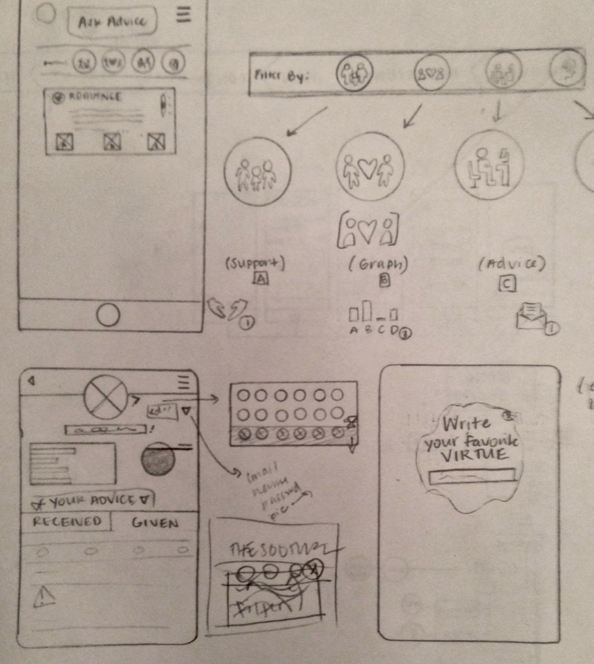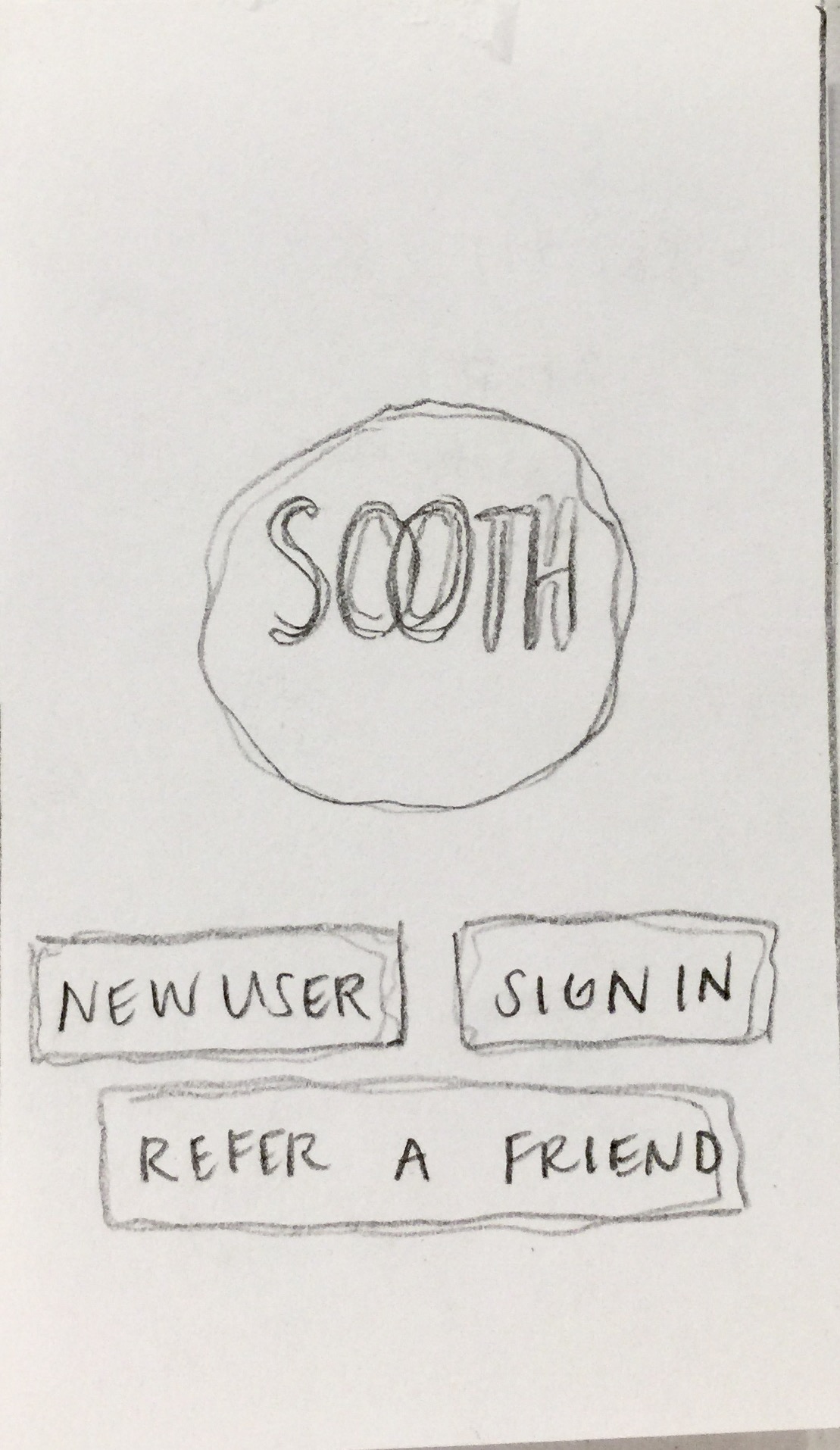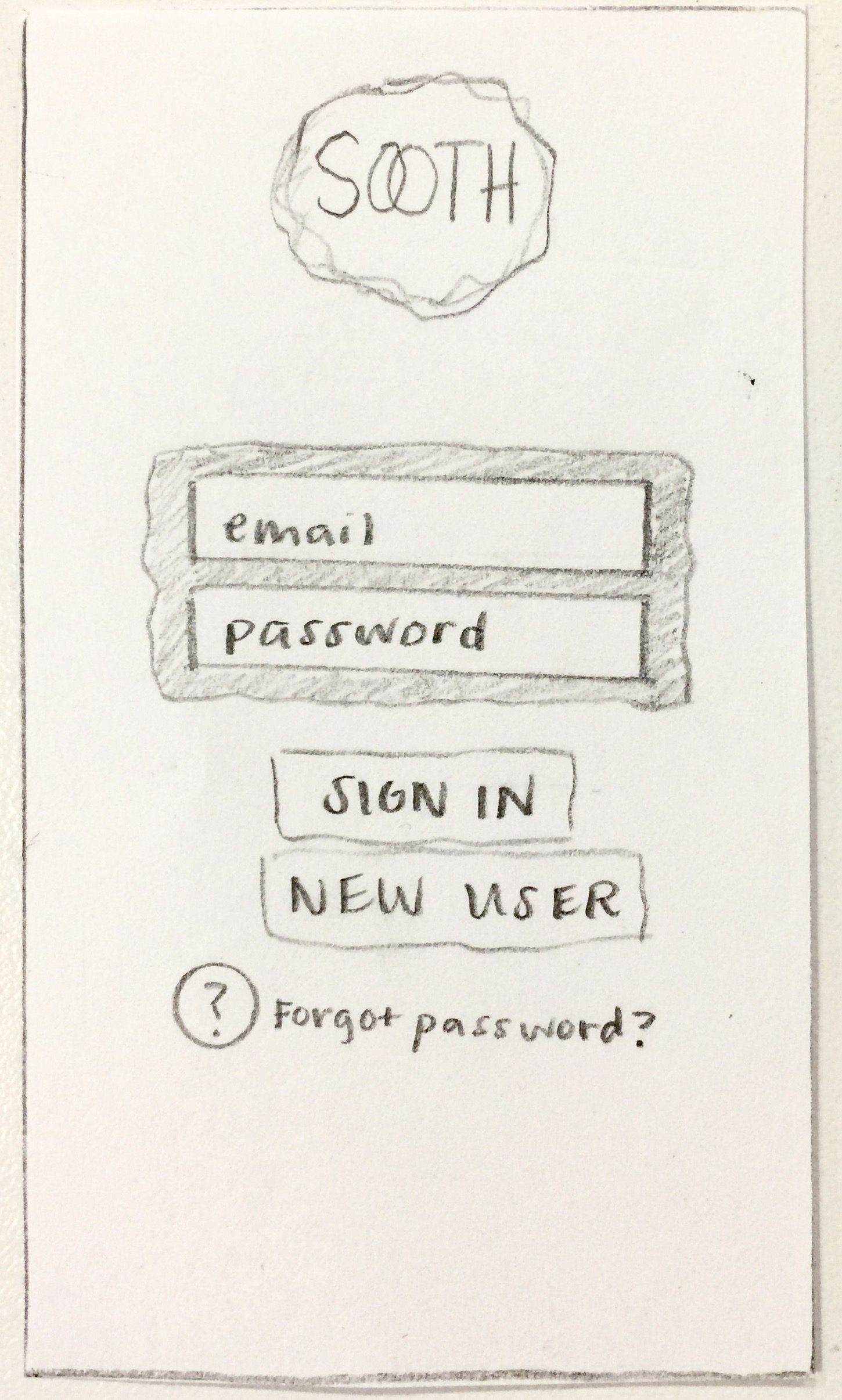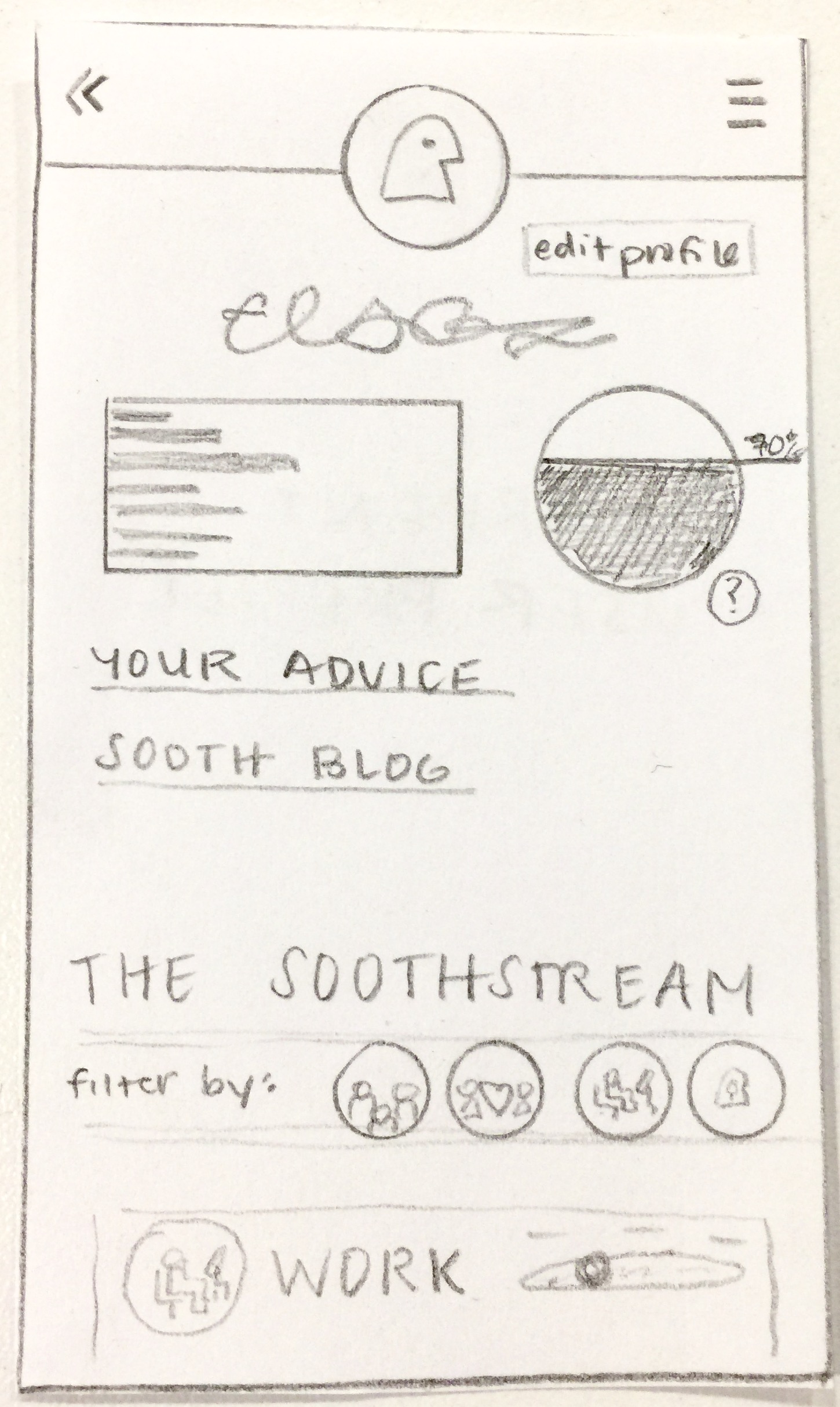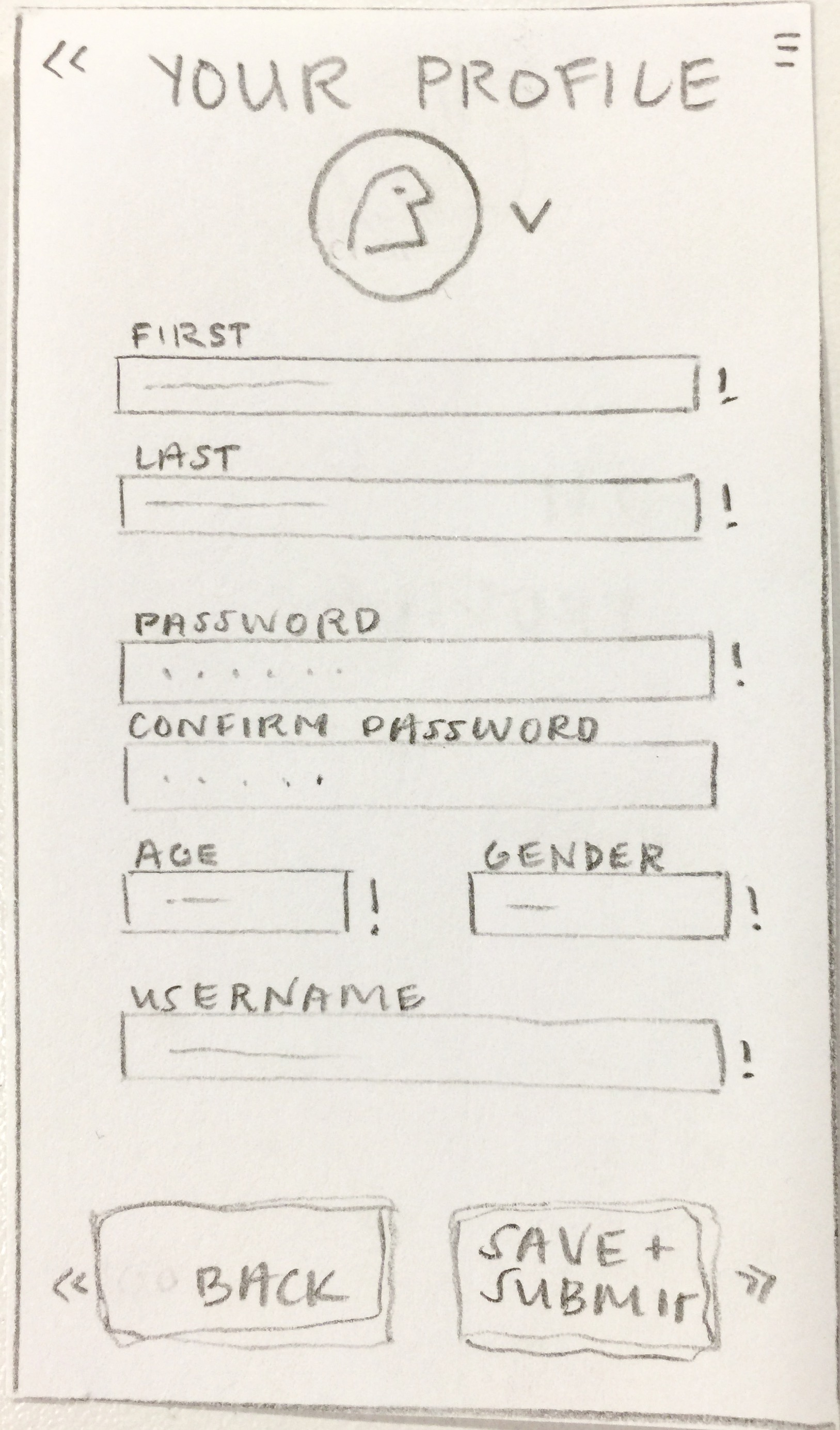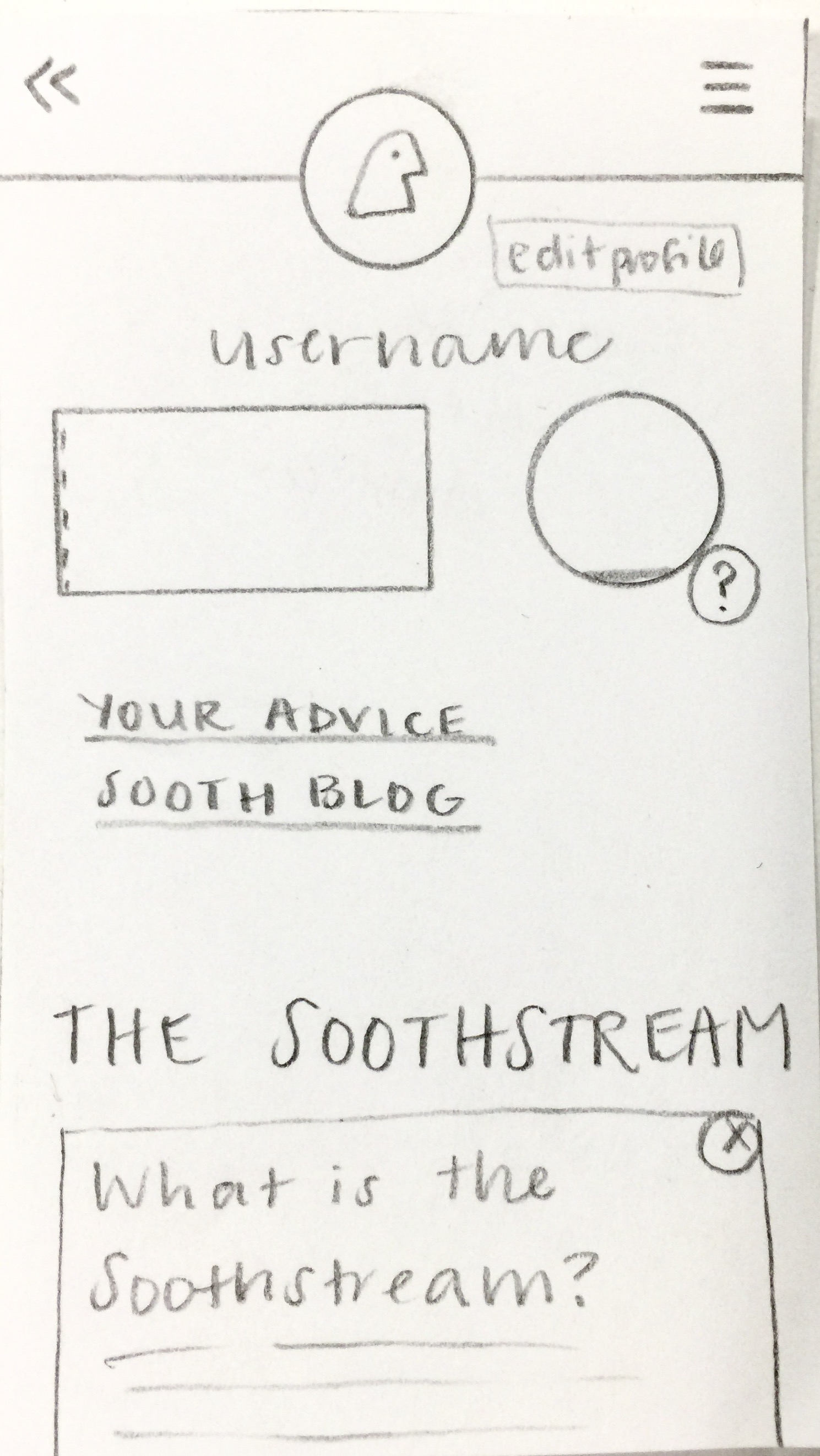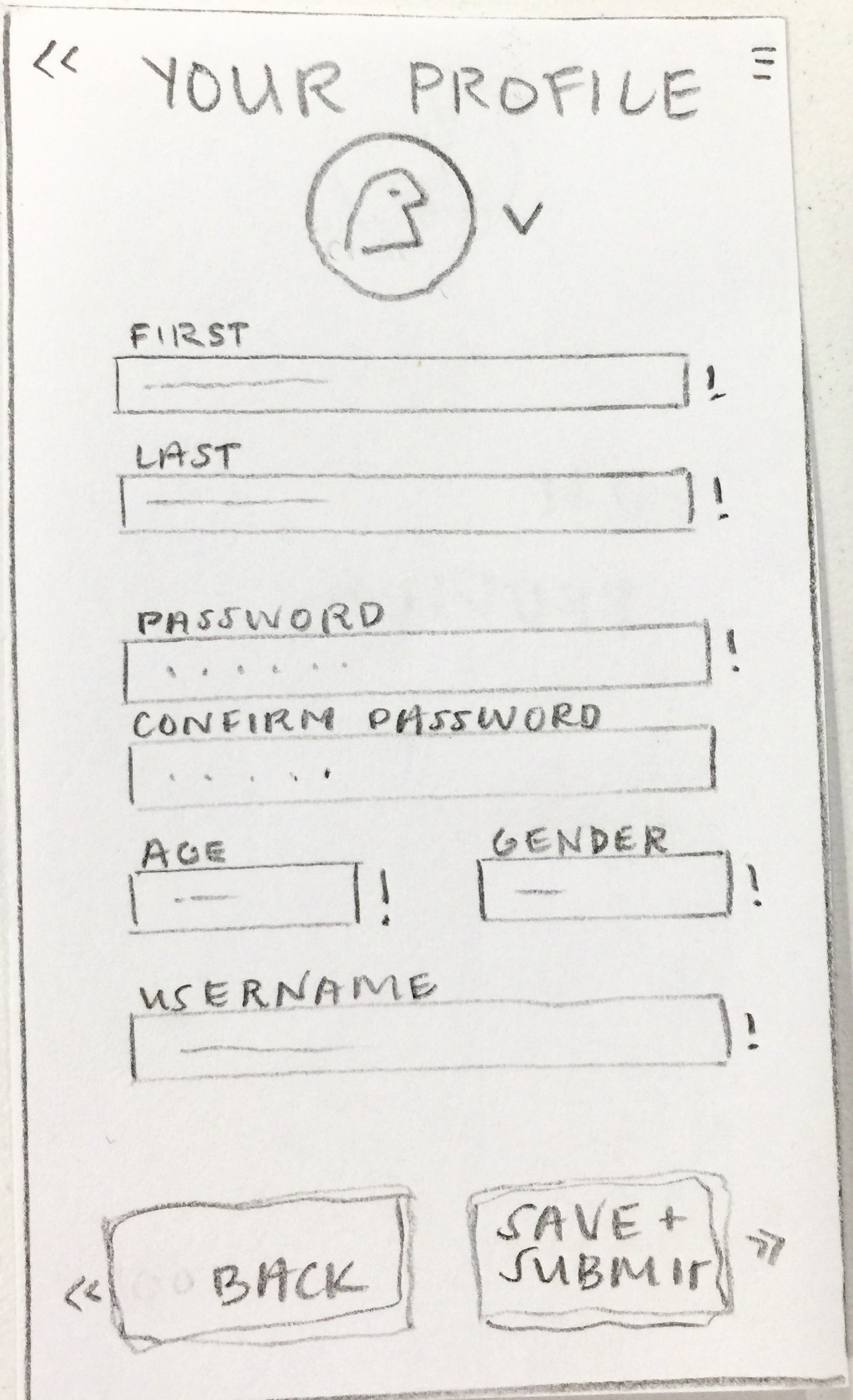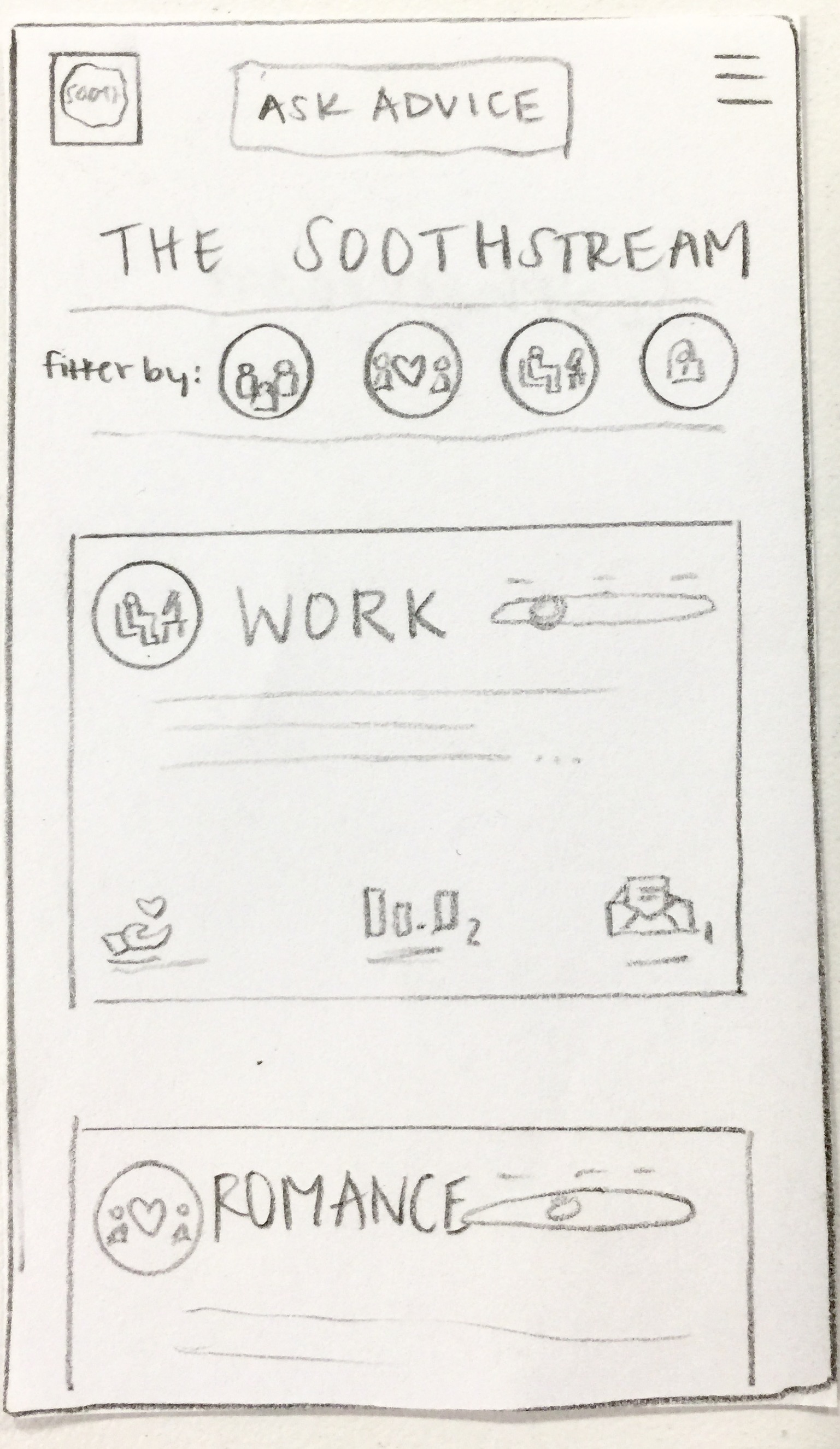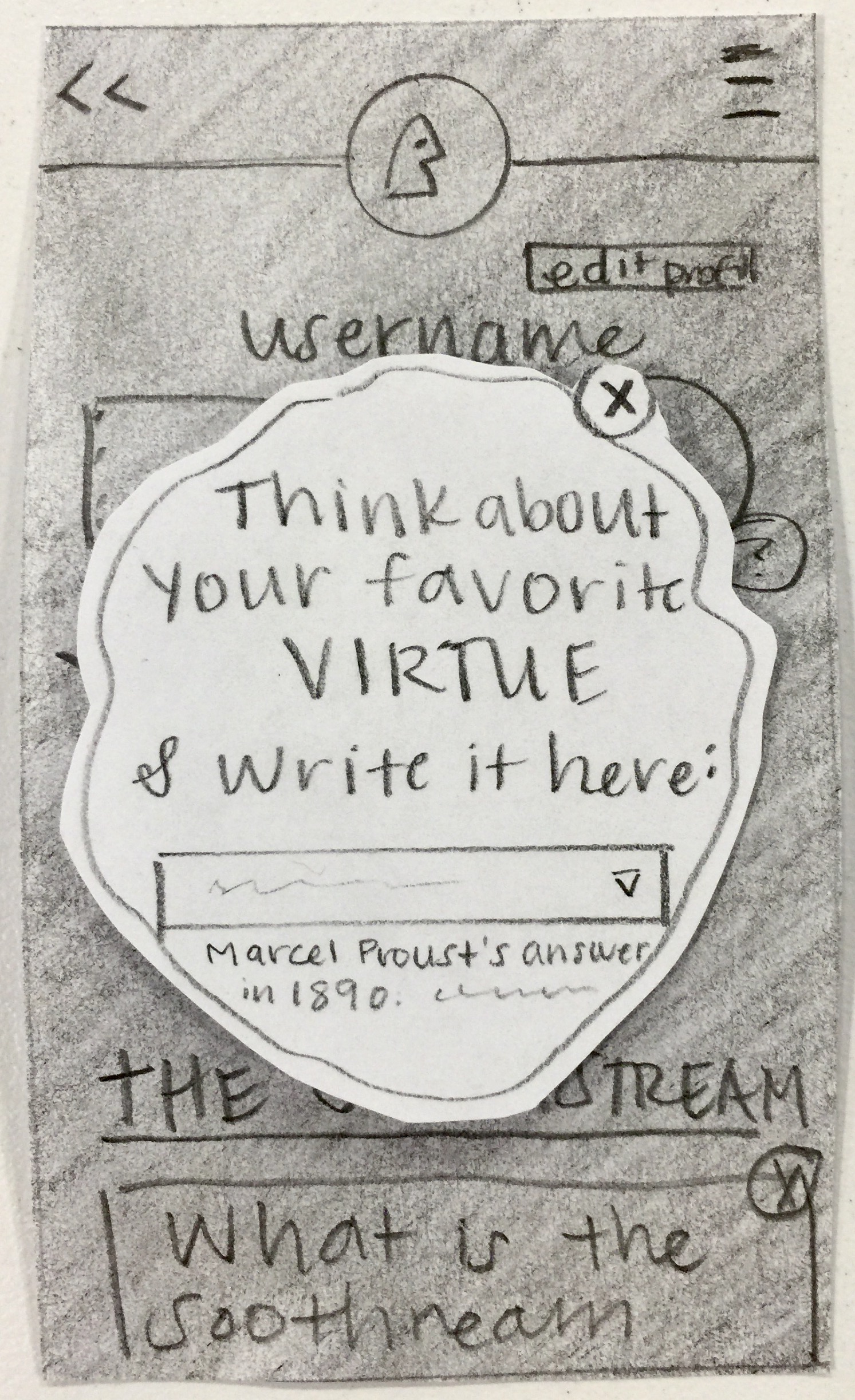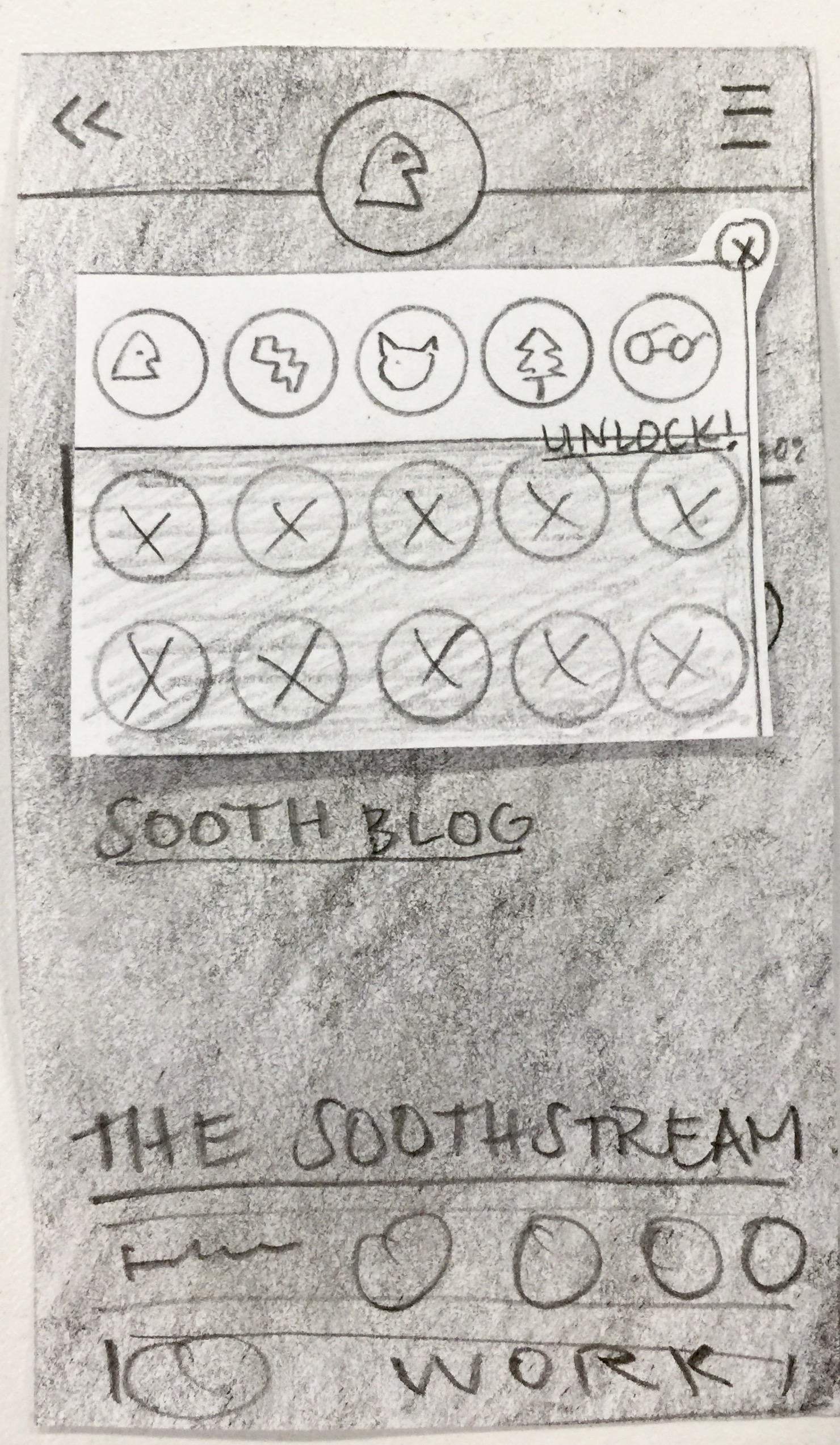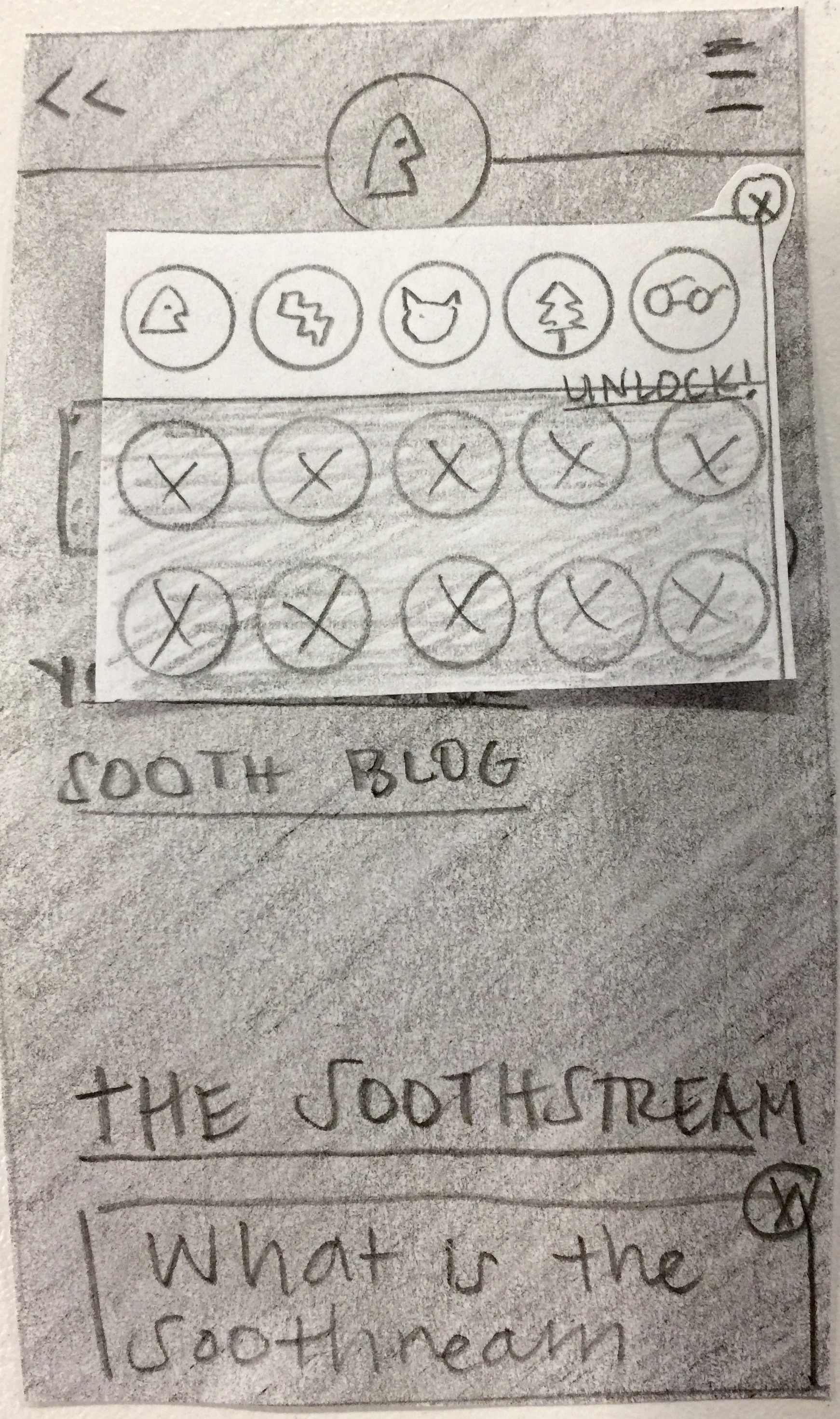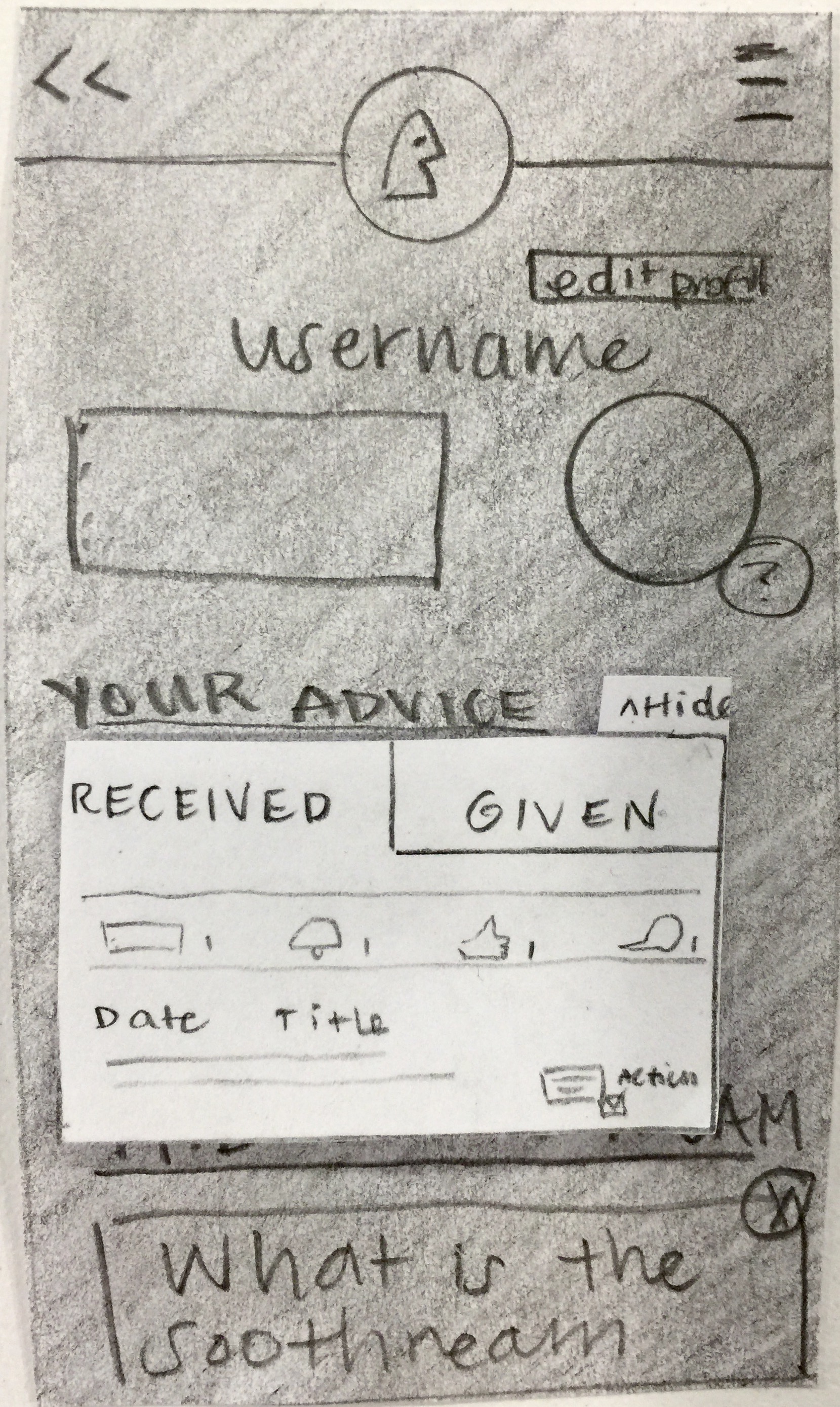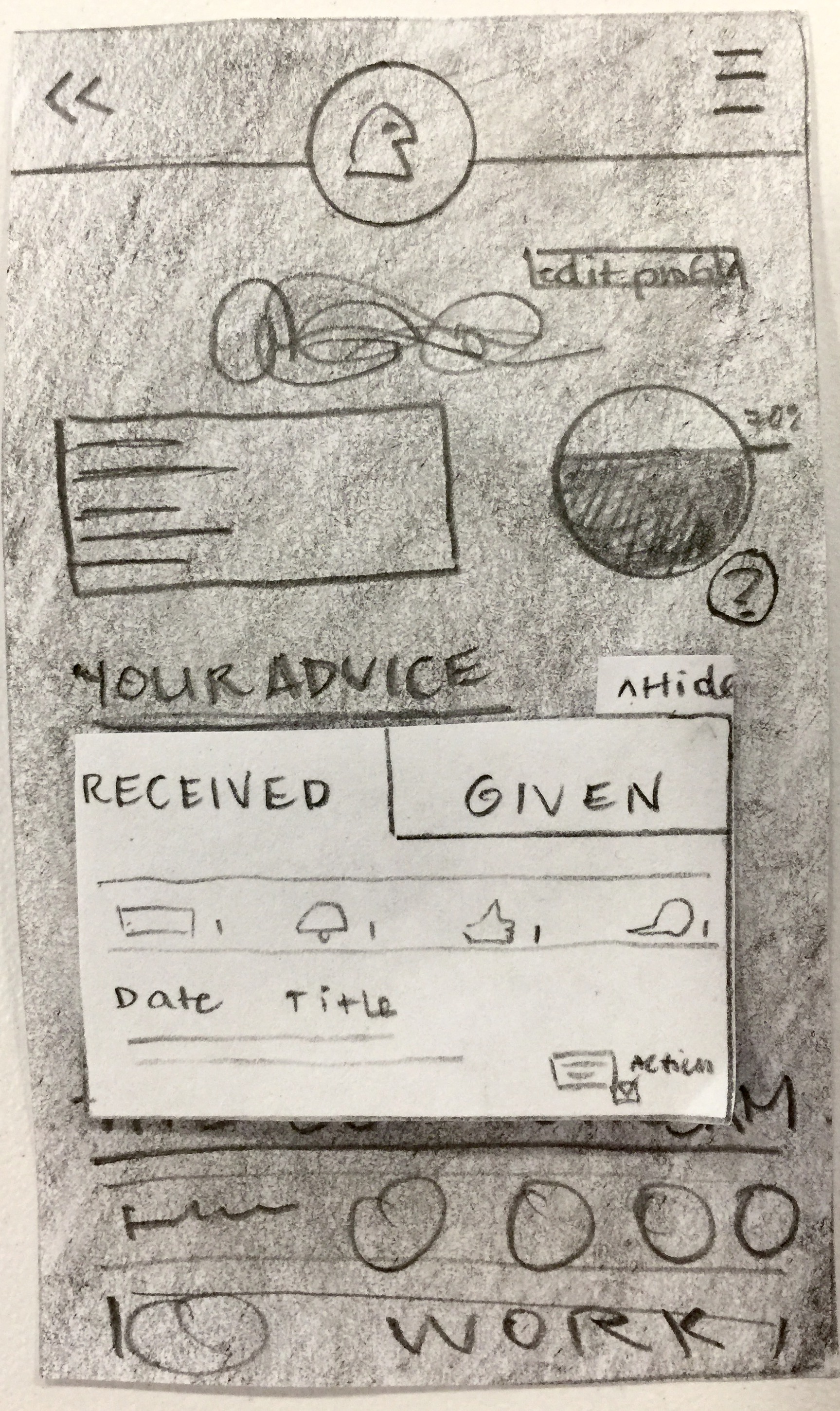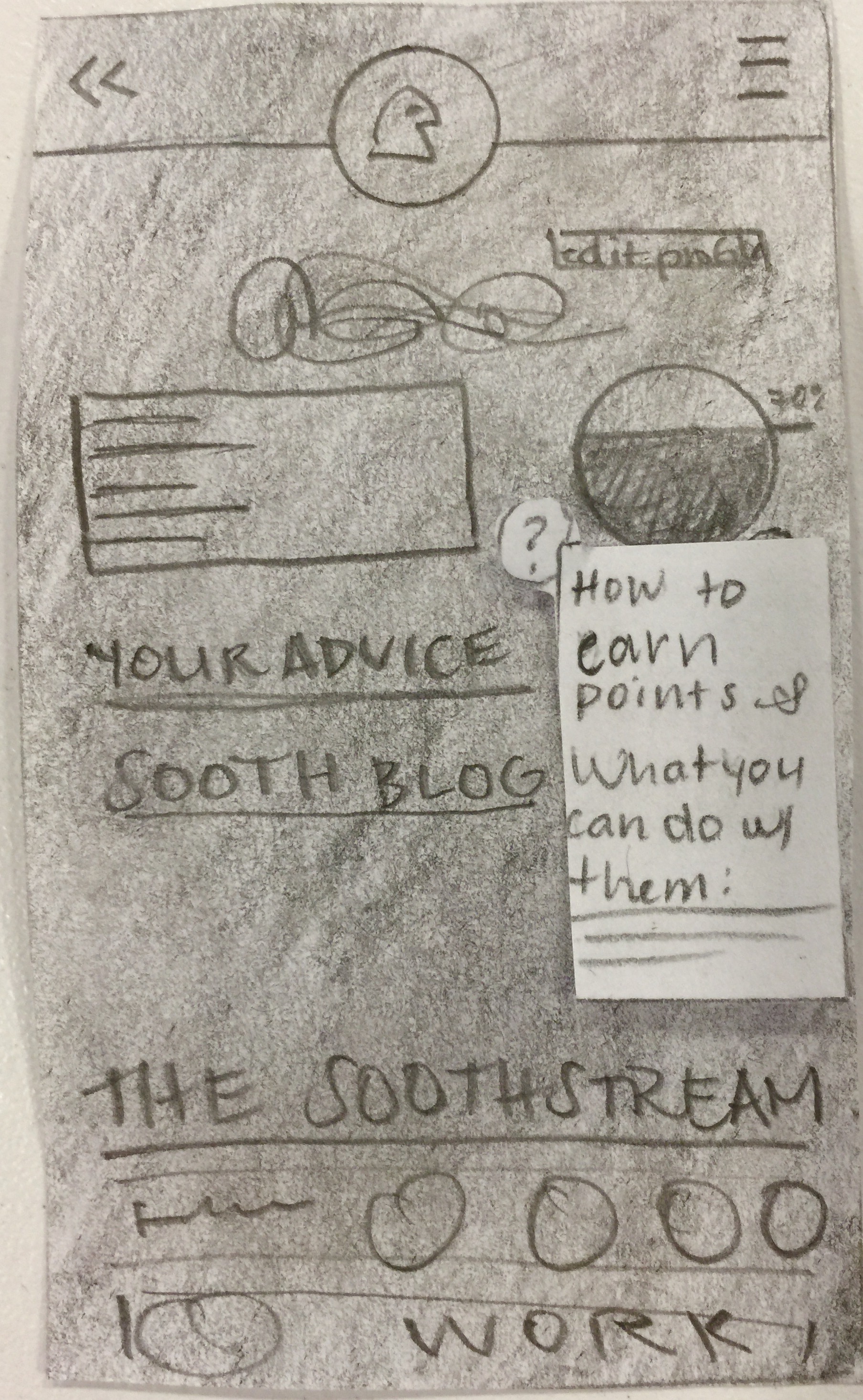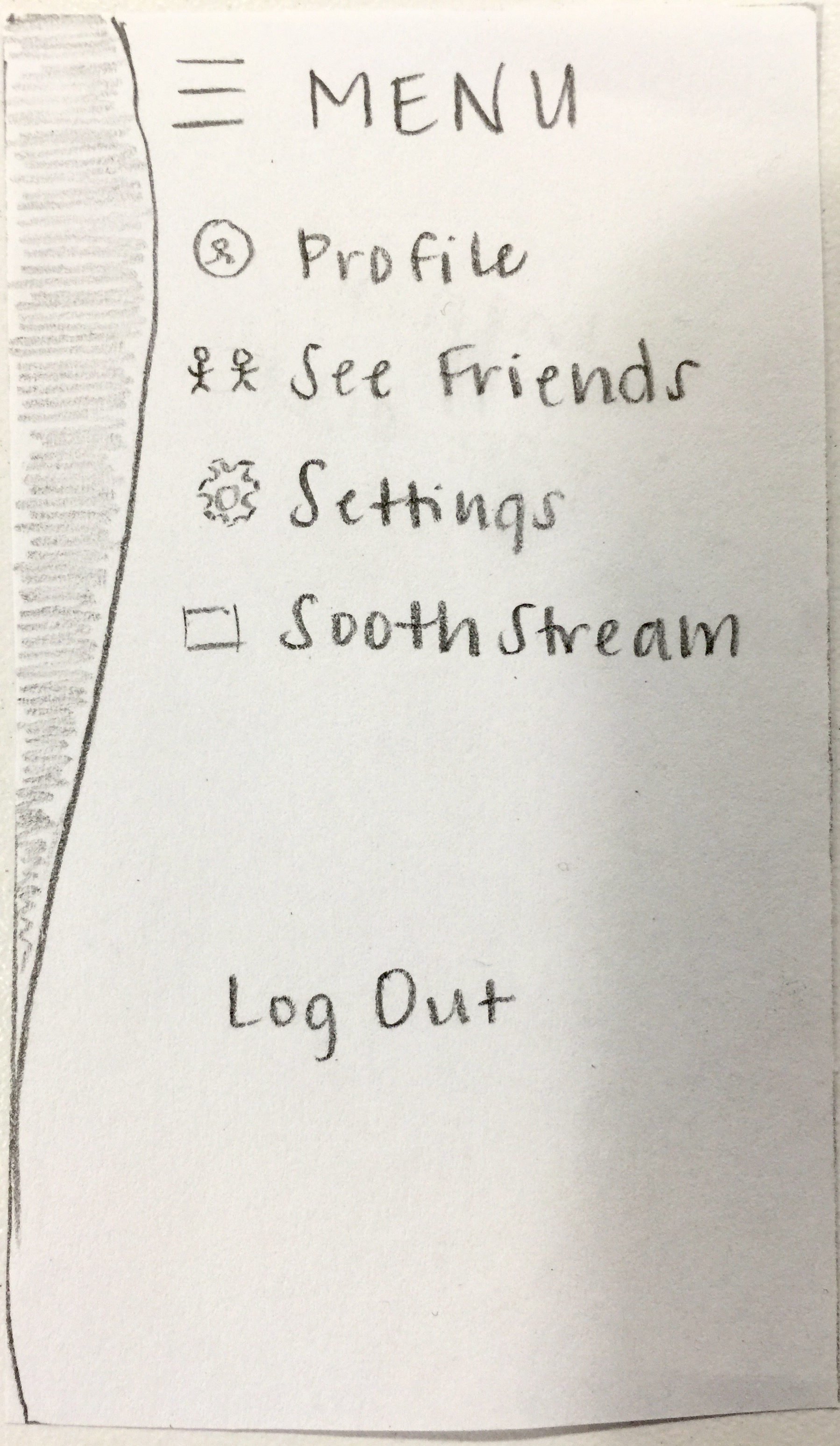


Sooth
user-generated advice & mobile app
Sooth
user-generated advice & mobile app

user generated advice
Sooth is a mobile platform for advice built to incorporate social science into every aspect of its process and platform to facilitate honest advice. Users also have the ability to peer into the situations of others and advise. Sooth strives to be a window into the authentic human condition.
user generated advice
Sooth is a mobile platform for advice built to incorporate social science into every aspect of its process and platform to facilitate honest advice. Users also have the ability to peer into the situations of others and advise. Sooth strives to be a window into the authentic human condition.
Sooth was designed with options for passive or active participation in which users describe complicated situations on which they need advice. They have the options of asking trusted friends, anonymous members of the Sooth community, or qualified experts.
“Sooth is a mobile platform for advice built on the insight that tough choices are daunting & honest answers are hard to find.”
Research
Began research with a stakeholder interview to define goals, expectations, and deliverables. Once the initial meeting was complete, I completed a prioritization grid. This was to assist with the many items ( ideas, scenarios, stakeholder requests) we had before us and come up with what we could expect to deliver within a three week time.
- User Goals: gain support & good advice that they can’t find elsewhere
- Business Goals: functionality infrastructure to match goal to go to “scale” & generate revenue down the line
- Discover-Define Target Audience- Better understand who are the users?
- Define- User research & synthesis to clarify noted problem(s)
- Design- New user flow to solve pain points for users
- Develop-Wireframes for User-generated content with emphasis on community and promoting habitual use.
- Delivery- Lo-fi Wireframes/ Possible interactive prototype/ hi-fi mock up.
COMPARATIVE ANALYSIS
- “Human connections” are a priority for all advice apps.
- Confidential but public is a common trait among other advice giving sites.
- A profile page is common.
- Views & comments are quantified and tracked.
- Profile photo is optional among the sites
- Separate topic channels have varying flows of traffic. Most heavily used channels revolve around romance and relationships.
- It appears from reviewing advice providing sites, that most users are in middle or high school.
RESEARCH: PRO'S & CON'S OF USER GENERATED CONTENT
Con's of User-Generated Content
- Reliability and accuracy of the material posted. (concern noted during all testing)
- Some users lack skill to produce content
- Successfully using content from users requires around the clock supervision (trolls)
- Liability/legal issues (copyright, defamation, pornography, legal issues of child protection due to the large amount of users under the age of 18)
- Credibility of users, including the SOOTH experts.
Pro's of User-Generated content:
- The Sooth Askers and Advisors generate content.
- Help the Sooth community learn about learn about itself (values, views)
- Encourages and facilitates debate (gives voice)
- Helps resolve disputes. Self policing
- Adds a corrective to the "natural asymmetry of information" between those in power and the public
- Personal Connection: strengthens the relationship between audience and broadcaster. (trust & loyalty)
- Moderator can lean more about audience (values, concerns, interests)=Better experience
USER RESEARCH: IN THE FIELD & ONLINE SURVEY
The stakeholder designed SOOTH for working mothers, and women that want really honest advise. However, further digging began to reveal that the primary users appear to be teenagers. I began to explore why this was the case and identify what needs of this population was SOOTH meeting?
Research: TEEN INTERNET USE, SOCIAL MEDIA USE
Takeaway from Pew Research Center:Teens, Social Media & Technology Overview 2015:
- Teens have grown up carefully curating digital identities that might not reflect their true struggle, so these anonymous apps create an alternative to Facebook.
- Increasingly using anonymous sites to share their anxieties, crushes, and bully without adult supervision.
- Snapchat and instagram more likely to be used by Middle and upper income teens; Facebook most popular among lower income youth.
- 71% of teens use more than one social network site
- Teenage girls use social media platforms (particularly visually oriented) for sharing more than their male counterparts.
- Internet use in near consistent in some teens.
- 91% of teens access internet with mobile device.
- 11% of teens report useing anonymous Q & A apps. (G-13%, B-8%)
Source: Pew Research Center's Teen relationship Survey (106p, age 13-17)
USER RESEARCH // CONTEXTUAL INQUIRY
Sooth was conceived to be used by young to middle-aged primary working females who wanted to anonymously give and receive tough advice about life circumstances. However, we found out that a large segment of Sooth's users are of highschool age.
- Online survey + iconography testing aimed at 25 - 50 + yr old respondents
- In-person user testing + iconography testing aimed at 14 - 18yr old respondents at a local Austin high school
Insights & take away:
70% of responders said that an advice giver’s background/context is important to them.
80% Experience & Education most important
82% of responders prefer giving more than asking for advice.
Difference b/w the social platforms the adults & the kids preferred.
Anonymity & online safety are of importance to both groups.
Personas / Journey Map
suggested features and design RECOMMENDATIONS
Altering full anonymity: 100% anonymity for those seeking advice. 60% of users reported that if they felt they could be more honest with others if they were anonymous.
Required username/profile (no real information, just a chosen avatar image & made-up username) for those commenting on advice. 70% of responders said that an advice giver’s background/context is important to them and 80% stated Experience & Education most important.
This gives some accountability to the members providing advice. This can also provide a form of self expression. We are entering an era of hyper-personalization enabled by technology. People enjoy spending time customizing their avatars, from eye and skin color and body shape to accessories like earrings, hats and gloves, to control how they are viewed by other players.
Consolidating & Changing Icons. This would also narrow down the number of topics. Recommend a maximum of four (family+friends//love//work//other) to minimize confusion/option overload.
Connecting. Focus on cultivating & strengthening the existing community as well as ease the on-boarding process.We long to be part of something larger than ourselves. This could mean connecting to other people to be part of a community, or connecting to a cause to be part of something larger and meaningful. We join clubs of various sorts to connect with people like us and have meaningful shared experiences. It validates our existence and makes life more enjoyable.
Implementing a Landing Page, Profile Page, Walk-Thru & Warm-up to ease and inform new user into the app.
Reducing # of required fields when posting a situation to encourage participation and ease (based on research findings that suggested the process was too strict and lengthy)
Close the engagement feedback Loop. An engagement loop pulls the user in, incentivizes an action, and rewards the user for completion of the action (positive reinforcement):
Motivation- Want to achieve likes from Sooth Community for advice. This increase status, and feel good knowing advice was used. (Positive reinforcement)
Action- Provide advice to people.
Feedback- Hear how advice assisted. This provides intrinsic motivation with emotional connection that your advice had been read and possibly helped. We like to receive feedback. This could be as simple as the small nods we get when we talk to people. It communicates, "I heard you. I am paying attention. What you are saying is worth listening to". It motivates us to continue talking to this person. A digital example is Amazon sending us an instant confirmation email when we place an order. It communicates, "We received your order. It is safe with us". It enhances our sense of security and wellbeing.
Not receiving any feedback can be extremely demotivating. If you are talking to someone and they remain impassive, you eventually stop talking, since you are not sure if the other person is listening to you or understands you. Software that gives you no feedback when you perform an action is significantly less enjoyable to use than one that does.
User flows
ITERATIONS OF SKETCHES & WIREFRAMES
INTERACTIVE PAPER PROTOTYPES
SOOTH PAPER PROTOTYPE: NEW USER
SOOTH PAPER PROTOTYPE: CURRENT USER


